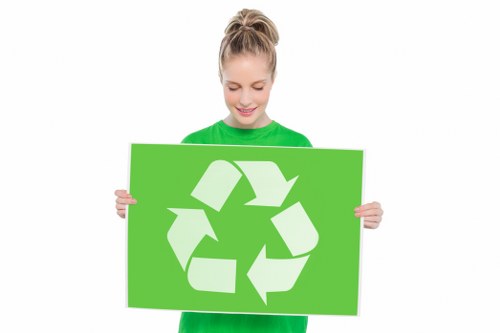Waste Disposal in Clearance Sucks

Waste disposal has become one of the most pressing issues in our modern society. As communities expand and consumption increases, the challenge of managing and disposing of waste effectively becomes more daunting. Unfortunately, clearance waste disposal practices often fall short, leading to numerous environmental and societal problems.
Improper waste disposal not only affects the aesthetics of our surroundings but also poses significant health risks. From overflowing landfills to improperly managed recycling processes, the consequences of inadequate clearance waste disposal are far-reaching and multifaceted.
Understanding the intricacies of waste disposal in clearance is crucial for developing effective strategies to mitigate its negative impacts. This article delves into the various aspects of waste disposal challenges, the environmental implications, regulatory issues, and potential solutions to improve clearance waste management.
Understanding Waste Disposal Challenges

Clearance waste disposal encompasses the removal of unwanted materials from residential, commercial, and industrial spaces. Despite its importance, several challenges hinder the efficiency and effectiveness of current disposal practices.
One of the primary challenges is the lack of public awareness and education. Many individuals and businesses remain uninformed about proper disposal methods, leading to increased contamination in recycling streams and unnecessary strain on landfills.
Additionally, the absence of standardized disposal procedures across different regions exacerbates the problem. Without uniform guidelines, it becomes difficult to implement cohesive waste management strategies, resulting in inconsistent disposal practices and environmental degradation.
The Importance of Proper Disposal

Proper waste disposal is essential for maintaining public health and preserving the environment. When waste is not managed correctly, it can lead to the spread of diseases, pollution of water bodies, and depletion of natural resources.
Moreover, effective disposal practices contribute to sustainability efforts by promoting recycling and reducing the volume of waste sent to landfills. This not only conserves space but also minimizes the environmental footprint associated with waste management.
Investing in proper waste disposal infrastructure and education can yield significant benefits, including cleaner communities, healthier ecosystems, and a more sustainable future.
Common Problems in Clearance

Several issues are prevalent in clearance waste disposal, hindering its efficiency and effectiveness. Overcrowded landfills are a significant concern, as they rapidly reach capacity, leaving little room for additional waste.
Another problem is the improper sorting of recyclables, which contaminates entire batches and renders them unsuitable for processing. This not only wastes valuable resources but also increases the overall cost of waste management.
Furthermore, inadequate waste collection services in certain areas lead to the accumulation of garbage, creating unsanitary conditions and attracting pests. Addressing these common problems is vital for improving waste disposal outcomes.
Environmental Impact of Poor Disposal

The environmental ramifications of improper waste disposal are extensive and alarming. From air pollution caused by the decomposition of waste to water contamination from leachate, the effects are felt across various ecosystems.
Landfills are a major source of methane emissions, a potent greenhouse gas that contributes significantly to climate change. Additionally, the release of toxic substances from improperly disposed electronic waste poses serious threats to both human health and wildlife.
Moreover, the visual degradation of landscapes due to unmanaged waste detracts from the natural beauty of our surroundings and diminishes the quality of life for residents.
Pollution and Health Risks

Waste that is not disposed of properly can lead to severe pollution, affecting air, water, and soil quality. Harmful chemicals and pollutants can leach into groundwater, making it unsafe for consumption and disrupting aquatic ecosystems.
Aerial emissions from waste decomposition release noxious gases that degrade air quality and pose respiratory risks to humans and animals alike. The accumulation of waste can also create breeding grounds for disease-carrying pests, further endangering public health.
Addressing these pollution and health risks requires immediate and sustained efforts to improve waste disposal practices and implement robust environmental safeguards.
Long-term Consequences

The long-term consequences of inadequate waste disposal are dire and far-reaching. Persistent waste accumulation can lead to irreversible damage to natural habitats, threatening biodiversity and disrupting ecological balance.
Climate change is another significant consequence, as greenhouse gas emissions from landfills exacerbate global warming. The degradation of soil quality from waste contamination also reduces agricultural productivity, impacting food security.
Moreover, the aesthetic decline of environments plagued by unmanaged waste can deter tourism and negatively affect local economies, creating a cycle of economic and environmental decline.
Legal and Regulatory Issues

Waste disposal is governed by a complex web of laws and regulations aimed at ensuring environmental protection and public safety. However, the enforcement of these regulations is often inconsistent, leading to widespread non-compliance.
Regulatory frameworks vary significantly across different jurisdictions, creating challenges for businesses and communities in adhering to varying standards. This inconsistency undermines efforts to establish uniform waste management practices and hinders progress towards sustainable disposal solutions.
Moreover, the penalties for non-compliance are not always stringent enough to deter improper disposal, allowing harmful practices to persist unchecked.
Compliance Requirements

Compliance with waste disposal regulations involves adhering to specific guidelines regarding the collection, transportation, and processing of waste materials. This includes proper segregation of recyclables, hazardous waste handling, and adherence to disposal timelines.
Businesses and individuals must be aware of and comply with local, state, and federal regulations to avoid legal repercussions. Regular audits and monitoring are essential to ensure ongoing compliance and identify areas for improvement.
Investment in training and resources can facilitate better compliance, fostering a culture of responsibility and sustainability in waste management practices.
Consequences of Non-compliance

Failure to comply with waste disposal regulations can result in severe consequences, including hefty fines, legal action, and reputational damage. For businesses, non-compliance can lead to operational disruptions and loss of customer trust.
Individuals may face penalties such as fines or community service, depending on the severity of the violation. Persistent non-compliance can also result in stricter regulations and increased scrutiny from regulatory bodies.
Addressing non-compliance requires proactive measures, including regular education, effective monitoring, and the implementation of robust waste management systems.
Solutions for Effective Waste Clearance

Improving waste disposal in clearance requires a multifaceted approach that addresses the root causes of inefficiency and ineffectiveness. Implementing best practices and leveraging technology can significantly enhance waste management outcomes.
One effective solution is the adoption of a comprehensive waste management plan that includes reduction, reuse, recycling, and responsible disposal. This holistic approach ensures that waste is minimized at the source and managed sustainably throughout its lifecycle.
Additionally, investing in advanced waste processing technologies can improve recycling rates and reduce the environmental footprint of waste disposal.
Best Practices

Adhering to best practices in waste management is crucial for ensuring efficiency and sustainability. Key practices include:
- Segregation: Properly separating recyclables, hazardous materials, and general waste at the source.
- Regular Collection: Ensuring timely and frequent waste collection services to prevent accumulation.
- Public Education: Raising awareness about the importance of proper waste disposal and recycling.
- Monitoring and Evaluation: Continuously assessing waste management processes to identify and address inefficiencies.
Implementing these best practices can lead to significant improvements in waste disposal outcomes and contribute to a more sustainable environment.
Choosing the Right Disposal Service

Selecting a reliable and efficient waste disposal service is pivotal for effective clearance waste management. Factors to consider include:
- Reputation: Assessing the track record and customer reviews of the disposal service provider.
- Compliance: Ensuring the provider adheres to all relevant regulations and standards.
- Services Offered: Evaluating the range of services, including recycling, hazardous waste handling, and regular collection schedules.
- Cost-effectiveness: Balancing service quality with affordable pricing to ensure value for money.
Choosing the right disposal service can streamline waste management processes and enhance overall efficiency.
Implementing Recycling Programs

Recycling plays a critical role in effective waste disposal. By diverting recyclable materials from landfills, recycling reduces the demand for raw materials and conserves natural resources.
Implementing community-based recycling programs can encourage participation and increase recycling rates. Providing accessible recycling bins and regular collection services makes it easier for individuals and businesses to contribute to recycling efforts.
Additionally, promoting the economic benefits of recycling can motivate more stakeholders to invest in sustainable waste management practices.
Technological Innovations

Advancements in technology have the potential to revolutionize waste disposal in clearance. Innovations such as automated sorting systems, waste-to-energy technologies, and smart waste management solutions can enhance efficiency and reduce environmental impact.
For instance, automated sorting systems can improve the accuracy of recyclable material separation, increasing the overall recycling rate. Waste-to-energy technologies convert waste into usable energy, providing a sustainable alternative to traditional energy sources.
Adopting these technological innovations can significantly improve waste disposal outcomes and contribute to a more sustainable future.
Conclusion

Waste disposal in clearance is undeniably challenging, with numerous environmental, legal, and operational hurdles to overcome. However, by understanding these challenges and implementing effective solutions, we can significantly improve waste management practices.
Investing in education, infrastructure, and innovative technologies is essential for fostering a culture of responsible waste disposal. Moreover, regulatory bodies must enforce compliance to ensure that waste management practices align with sustainability goals.
Ultimately, addressing the shortcomings of waste disposal in clearance requires a collective effort from individuals, businesses, and government entities. By working together, we can create a cleaner, healthier, and more sustainable environment for future generations.
Contact us today to learn more about effective waste disposal solutions and how we can help you manage your clearance waste efficiently.